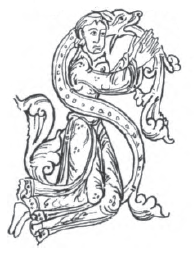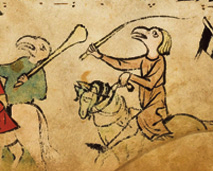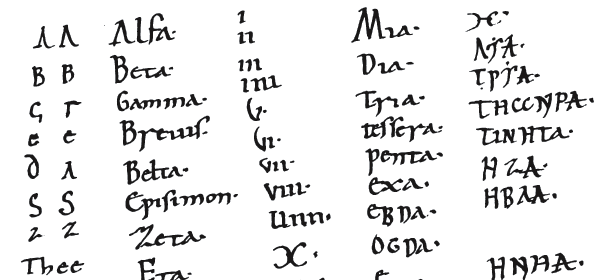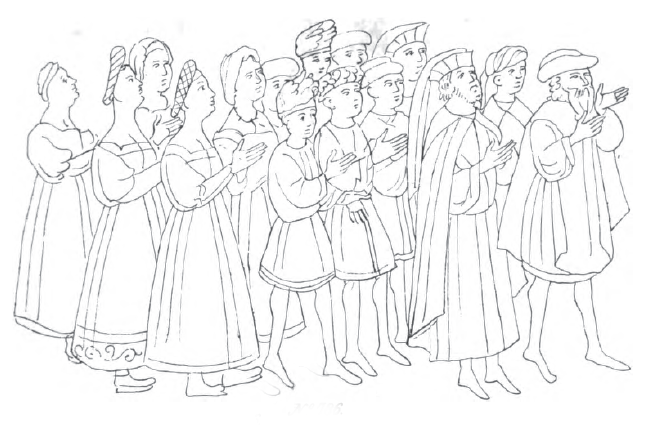Harelbeke  There are some interesting entries in the Catalogue of the extraordinary collection of splendid manuscripts: chiefly upon vellum, in various languages of Europe & the East published by Davy in 1859.
There are some interesting entries in the Catalogue of the extraordinary collection of splendid manuscripts: chiefly upon vellum, in various languages of Europe & the East published by Davy in 1859.
Kamp-Lintfort It is an auction catalog compiled by or for M. Guglielmo Libri, who was parting with his enviable library through S. Leigh Sotheby & John Wilkinson, apparently due to ill health. His shelves contained many texts on philosophy and science in Latin, Greek, Hebrew, Aramaic, and other languages, as well as books of music and maps. The collection is notable for having a significant number of very old manuscripts (early medieval, Merovingian, and Carolingian).
Herbal Traditions
The following entry is for an herbal manuscript on vellum:
482 HERBARIO, CON FIGURE 4to SÆC. XV. ON PAPER (80 leaves)
Each leaf contains a rude drawing in colours of the Plant described in the opposite page. The work, which seems totally unknown, commences “Dacer el qualle te scrive li vertu de alchune herbe in lo so principio mette in parte de le vertu et proprieta de lartemissio, &c.” For the history of botany this manuscript is invaluable. Ancient manuscript Herbarj in Italian, with drawings, are extremely scarce; one only is mentioned by Marsand, and not a single one is to be found in the immenso Catalogue of the Medicean Library by Baudini.
The “Dacer el qualle…” introduction looks like Catalan to me but I am not familiar with all the dialects in that region. The bibliographic entry, as a whole, provides a peephole into what was known about herbal manuscripts (or, at least, what was known or claimed by this collector in the mid-19th century).
Embellished Characters
Something else of interest among his books is an example of littera elongata (similar to the VMS letters with ascenders). Legal documents often include embellished letters, but they are less common in manuscripts like this, a 12th-century book on astrolabe astronomy, with numerous tables written in Roman numerals. Note, in addition to the elongated characters, there is also a figure-8-style flourished character on the right:
I mentioned a while back on the Voynich.ninja forum, in connection with the 4 x 17 sequence in the VMS, that the Greek letter delta was sometimes written as a triangle without the baseline (similar to the letter alpha) and noticed there was an example of this variation in Libri’s copy of Pancrati Maryris Officium et Passio (catalog #760), which has text related to numbers added to a fore-leaf written in a pre-Gothic script (possibly close to the time of the creation of the manuscript, which is from the 10th century):
Costumes and Human Figures
 The facsimile below is from one of the drawings in Libri’s 15th-century copy of the Hagada Schel Pesach. It provides an unusual glimpse of people in a medieval Hebrew manuscript.
The facsimile below is from one of the drawings in Libri’s 15th-century copy of the Hagada Schel Pesach. It provides an unusual glimpse of people in a medieval Hebrew manuscript.
There were prohibitions against illustrating humans, so one usually finds decorative embellishments, bodies with blank faces, or human-animal hybrids, rather than people (see example on the right from the Israel Museum).
In contrast, Libri’s copy is illustrated with naturalistic people (in the Spanish style, according to the auction listing):
The garments and the poses are of interest, and also the way the faces are drawn (particularly the women on the left), as they are somewhat reminiscent of the VMS nymphs, with their rounded facial features and indistinctly drawn jawlines.
Auction catalogs do not always make interesting reading material, but this one is an exception, not only for the quality of the collection, as a whole, but because there are facsimiles of some of the illustrations at the end, and longer descriptions than usual. If you are interested in perusing it, there is a copy here.
J.K. Petersen
© Copyright 2017 J.K. Petersen, All Rights Reserved



